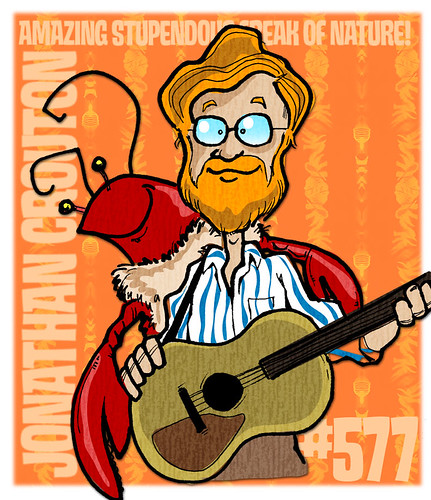In the past — way back in the mid-’90s, say — artists had only occasional contact with their fans. If a musician was feeling friendly, he might greet a few audience members at the bar after a show. Then the Internet swept in. Now fans think nothing of sending an e-mail message to their favorite singer — and they actually expect a personal reply. This is not merely an illusion of intimacy. Performing artists these days, particularly new or struggling musicians, are increasingly eager, even desperate, to master the new social rules of Internet fame. They know many young fans aren’t hearing about bands from MTV or magazines anymore; fame can come instead through viral word-of-mouth, when a friend forwards a Web-site address, swaps an MP3, e-mails a link to a fan blog or posts a cellphone concert video on YouTube.
So musicians dive into the fray — posting confessional notes on their blogs, reading their fans’ comments and carefully replying. They check their personal pages on MySpace, that virtual metropolis where unknown bands and comedians and writers can achieve global renown in a matter of days, if not hours, carried along by rolling cascades of popularity. Band members often post a daily MySpace “bulletin” — a memo to their audience explaining what they’re doing right at that moment — and then spend hours more approving “friend requests” from teenagers who want to be put on the artist’s sprawling list of online colleagues. (Indeed, the arms race for “friends” is so intense that some artists illicitly employ software robots that generate hundreds of fake online comrades, artificially boosting their numbers.)
A-list stars are made by multimillion dollar marketing campaigns; the B-listers need to build their network from the ground up. This has kind of always been the case. What the internet has done is change the nature of the network. This new breed of stars is able to, at once, get more personal with their fans while expanding the size and geographical distribution of that fan base.
Of course, the featured artist in the article was none other than Jonathan Coulton.

Click on the above picture to see Jonathan Coulton explain Code Monkey (drawing by Len)
I've blogged about Jonathan before (being a fan) so here it goes again (that reference will become clear soon enough). JoCo has managed to build up such a grassroots network, and much of its success is not due to anything he did or planned himself.
Coulton’s fans are also his promotion department, an army of thousands who proselytize for his work worldwide. More than 50 fans have created music videos using his music and posted them on YouTube; at a recent gig, half of the audience members I spoke to had originally come across his music via one of these fan-made videos. When he performs, he upends the traditional logic of touring. Normally, a new Brooklyn-based artist like him would trek around the Northeast in grim circles, visiting and revisiting cities like Boston and New York and Chicago in order to slowly build an audience — playing for 3 people the first time, then 10, then (if he got lucky) 50. But Coulton realized he could simply poll his existing online audience members, find out where they lived and stage a tactical strike on any town with more than 100 fans, the point at which he’d be likely to make $1,000 for a concert. It is a flash-mob approach to touring: he parachutes into out-of-the-way towns like Ardmore, Pa., where he recently played to a sold-out club of 140.
Let me just say that I'm one of those fans that Clive spoke to at the Ardmore concert, and indeed my first exposure to JoCo was through a Spiff video. (Although when I went to JoCo's website for the first time and started listening to all the music, I realized that I had heard Mandelbrot Set before but didn't know who sang it.) I really like the idea that many of these fan created videos have sort of become the "default official videos" for those songs--cool!
Speaking of cool homemade videos, the article also talks about the band Ok Go which is actually signed to a major record label (along with all the marketing machinery that comes with it) but became in instant internet sensation by employing some of these same tactics.
This confluence of forces has produced a curious inflection point: for rock musicians, being a bit of a nerd now helps you become successful. When I spoke with Damian Kulash, the lead singer for the band OK Go, he discoursed like a professor on the six-degrees-of-separation theory, talking at one point about “rhizomatic networks.” (You can Google it.) Kulash has put his networking expertise to good use: last year, OK Go displayed a canny understanding of online dynamics when it posted on YouTube a low-budget homemade video that showed the band members dancing on treadmills to their song “Here It Goes Again.” The video quickly became one of the site’s all-time biggest hits. It led to the band’s live treadmill performance at the MTV Video Music Awards, which in turn led to a Grammy Award for best video.
Just in case you haven't seen the video yet (perhaps you've been living in a cave but somehow managed to find this insignificant blog), I've embedded it below. Quick note: Damian Kulash is the tall skinny guy with the red pants. The one you see lip-syncing the lead vocals is the band's bass player (and childhood friend of Kulash) Tim. Not only do these guys rock, they have a sense of humor. Awesome!


No comments:
Post a Comment